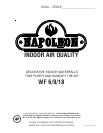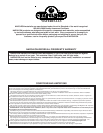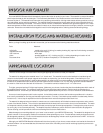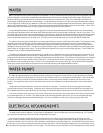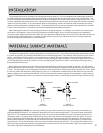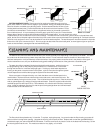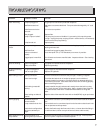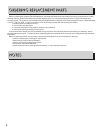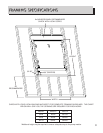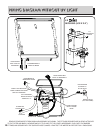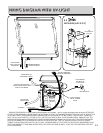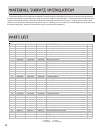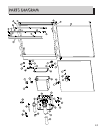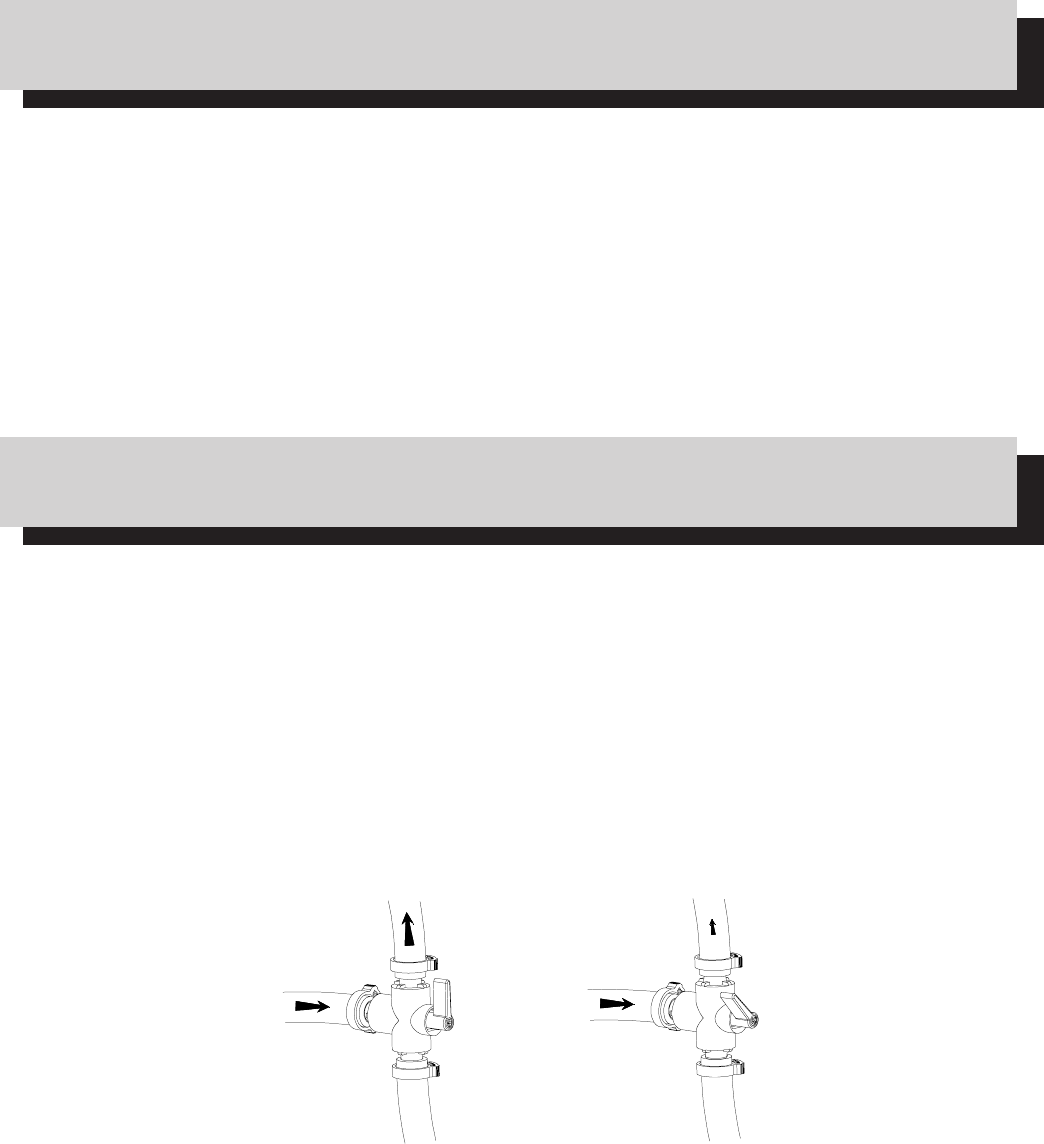
5
INSTALLATION
The framing dimensions are included in the framing specifications drawing. The unit is designed to be installed after drywalling.
For added protection water resistant drywall (green board) or cement board are recommended in the vicinity of the fountain. The
fountain is designed to be attached to the studs over the drywall along both vertical sides of the fountain using drywall screws. This
will leave a basically flush surface to trim over. Leak test the waterfall before fully enclosing. All trim used on the fountain should be
made of real wood (not MDF), or any other material that is not damaged by moisture, with several coats of a water proof coating
(paint or urethane) depending on the desired look. The bottom piece of trim can only be nailed at the ends, because it is mounted
in front of the stainless basin. It should be siliconed to the stainless basin for additional support.
After installing the fountain, connect the piping as shown in the piping diagrams. The tubing to connect the unit overflow to the
house drain is not supplied. If the unit is being connected to the water supply, use an ice maker plumbing kit (not supplied) to
connect the water supply to the float valve. When the unit is operational, adjust the float valve so that it turns the water off when the
top of the pump is submerged below 1-2” of water. Ensure that the wing nut on the side of the float valve is properly tightened.
Connect the light wire to the terminals on the transformer.
WATERFALL SURFACE MATERIALS
The waterfall is supplied with a stainless steel panel for the water to flow over. The surface of the stainless steel must be cleaned
to remove any grease or oily materials left behind from the manufacturing process. The protective coating will also leave a residue
behind. Any residue left on the surface, or oily residue from your hands, will repel the water and prevent a sheet of water from
forming over the panel. This will give you thin streams of water with large dry spots in between. Cleaning the panel with liquid TSP
(or TSP Substitute) will remove any residue or film that is impeding the progress of the water. Clean the panel thoroughly two or
three times before the first use.
Before starting the waterfall, the entire panel surface should be wet down, either by spray bottle, or wet cloth. This will help the
water to spread evenly across the panel. The wave effect of water flowing down the panel, will be attained after the panel is covered
in water. The wave pattern can be adjusted by increasing or restricting the flow of water with the valve at the side of the filter. Adjust
the valve to achieve the effect that is most pleasing to your eye. It is important to remember that too little water flow can cause dry
spots to reappear on the surface of the waterfall. You can increase the flow of water slightly until they disappear. Lightly rubbing a
wet cloth or Scotchbrite pad (careful not to scratch the stainless steel surface), across the panel may be enough to remove any dry
spots.
GROOVED ACRYLIC PANEL: An optional grooved acrylic panel which enhances the ripple effect can be purchased at your
authorized NAPOLEON dealer. It is designed to be placed in front of the stainless steel panel. This panel must be cleaned with
liquid TSP (or TSP Substitute) before being placed in the unit, to prevent dust and debris from the manufacturing process from
entering the water. Use caution when cleaning the grooves on the panel as the machined edges can be very sharp. The acrylic
panel is supplied with double sided tape, which is used to attach the acrylic panel to the stainless steel panel. Run three strips
vertically down the panel (one at each side and one down the centre. Remove the backing, and adhere the acrylic panel to the
stainless panel. Ensure that the bottom of the acrylic panel and the stainless panel are flush. The acrylic panel will require more
water to achieve the same wave effect as the stainless panel, as the grooves will fill and retain water. Again any dry spots can be
removed by rubbing horizontally with a Scotchbrite pad.
VALVE
FULL OPEN
VALVE
PARTIAL OPEN
FROM BASIN
TO FOUNTAIN
FROM BASIN
TO FOUNTAIN
TO DRAIN TO DRAIN



